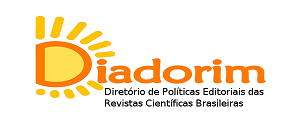MAPPING AND CLASSIFICATION OF THE DIFFICULTY LEVEL OF THE WATERFALLS TRAIL, MURITIBA – SÃO FÉLIX, BAHIA
DOI:
https://doi.org/10.20873/rtg.v13i29.17737Keywords:
Ecological Trails, Geotechnologies, Trail Classification, Recôncavo of BahiaAbstract
Trails have been a cultural element present in human history, serving as pathways of communication between different inhabited or visited places, meeting the needs for transportation, exploration of new territories, and the search for resources such as food and water. In the municipalities of Muritiba and São Félix, there already exists an informal trail system, where guides lead visitors through areas that include waterfalls, streams, hills, forests, and even rugged terrain. The aim of this work was to identify, map, and characterize an ecological trail, classifying it into different difficulty levels. This is intended to enhance the experience for various audiences and explore its tourist potential. The process involved three methodological stages: a bibliographic research to understand the environment, field data collection to comprehend its specific features, and georeferenced data processing to create thematic maps. The final outcome is a map displaying the various difficulty levels of the trail, highlighting sensitive areas that require protection to prevent excessive degradation and minimize environmental impact. This not only enhances the visitors' experience but also contributes to the conservation of these natural areas and their economic potential while preserving the environment.
References
ABNT - Associação Brasileira de Normas Técnicas. NBR 15505-2. Turismo com atividades de caminhada. Parte 2: classificação de percursos. Brasil: ABNT, 2008.
Barbosa, J. S. F.; Cruz, S. C. P.; Souza, J. S. Terrenos Metamórficos do Embasamento. In: Barbosa, J. S. F. (org.). Geologia da Bahia: pesquisa e atualização. 2v. Salvador. CBPM, p. 101-201. 2012
BFG – The Brazilian Flora Group. Brazilian Flora 2020: Leveraging the power of a collaborative scientific network. Taxon. 2021. Disponível em: https://doi.org/10.1002/tax.12640.
Carvalho, J.; Bóçon, R. Planejamento do traçado de uma trilha interpretativa através da caracterização florística. Revista Floresta. 34(1):23-32. Curitiba-PR. 2004.
Costa, V. C. Planejamento e Manejo de Trilhas. In: I Congresso Nacional de Planejamento e Manejo de Trilhas. Rio de Janeiro. 2006
Costa, V. C.; Triane, B. P.; Costa, N. M. C. Impactos ambientais em trilhas: agricultura × Ecoturismo - um estudo de caso na Trilha do Quilombo (PEPB - RJ). Revista Brasileira de Ecoturismo, 1: 84-113. 2008
Eisenlohr, P. V.; Melo, M. M. R. F.; Silva, M. R.; Schmal, P.; Ferreira-Júnior, W. G.; Dias, A. S.; Silva, A. F. Floristic variations in a woody plant community along a trail in a Semideciduous Seasonal Forest, Viçosa, Minas Gerais State, Brazil. Hoehnea, 38: 61-71. 2011
Eisenlohr, P. V.; Meyer, L.; Miranda, P. L. S.; Rezende, V. L.; Sarmento, C. D.; Mota, T. J. R. C.; Garcia, L. C.; Melo, M. M. R. F. Trilhas e seu papel ecológico: o que temos aprendido e quais as perspectivas para a restauração de ecossistemas?. Hoehnea, 40(3), 407–418. 2013 Disponível em: https://doi.org/10.1590/S2236-89062013000300002
FEMERJ - Federação de Montanhismo do Estado do Rio de Janeiro. Metodologia de Classificação de Trilhas v. 6.1. 2016. Disponível em: http://femerj.org/images/arquivos/classificacao-trilhas-v5.0.pdf
FUNCEME (Fundação Cearense de Meteorologia e Recursos Hídricos). Clima do Nordeste. 2023. Disponível em: https://www.funceme.br/clima/71-clima-do-nordeste
Gualtieri-Pinto, L.; Oliveira, F. F.; Andrade M. A.; Pedrosa H. F.; Santana, W. A.; Figueiredo, M. A. Atividade Erosiva em Trilhas de Unidades de Conservação: Estudo de Caso no Parque Nacional da Serra do Cipó, Minas Gerais, Brasil. Revista E-scientia. 2008. Disponívem em: http://revistas.unibh.br/index.php/dcbas/article/view/119
IBGE - Instituto Brasileiro de Geografia e Estatística. Cidades. 2022. Disponível em: https://cidades.ibge.gov.br/
Maciel, L. A.; Siles, M. F. R.; Bitencourt, M. D. Alterações na vegetação herbácea de floresta ombrófila densa decorrentes do uso em uma trilha turística na Serra do Mar em São Paulo, Brasil. Acta Botanica Brasilica 25: 628-632. 2011
Oliveira, E. P.; McNaughton, N. J.; Armstrong, R. Mesoarchaean to Palaeoproterozoic growth of the northern segment of the Itabuna-Salvador-Curaca orogen, Sao Francisco Cráton, Brazil. In: Kusky, T. M.; Zhai, M. G.; Xiao, W. (orgs.). The evolving continents: understanding processes of continental growth. London: Geological Society, p. 263-286. 2010.
Downloads
Published
How to Cite
Issue
Section
License
Copyright (c) 2023 Tocantinense Journal of Geography

This work is licensed under a Creative Commons Attribution-NonCommercial-NoDerivatives 4.0 International License.
Revista Tocantinense de Geografia does not remunerate any author for the publication of their texts. The contents of the texts published in this journal are the responsibility of the authors.




.png)












